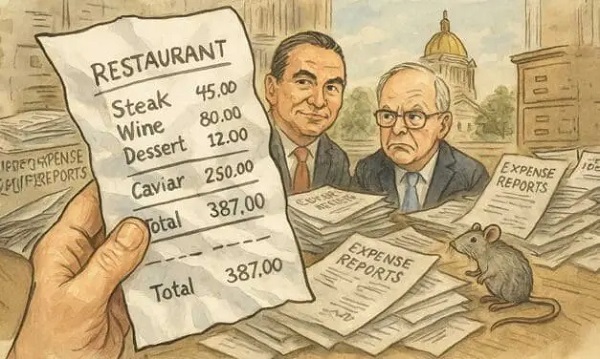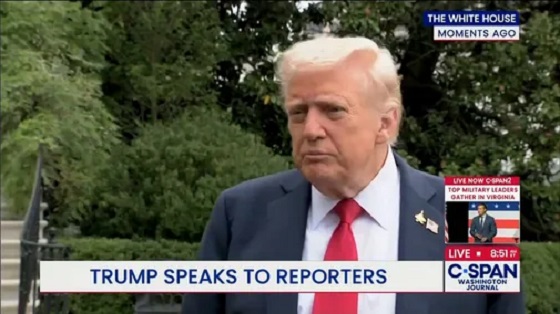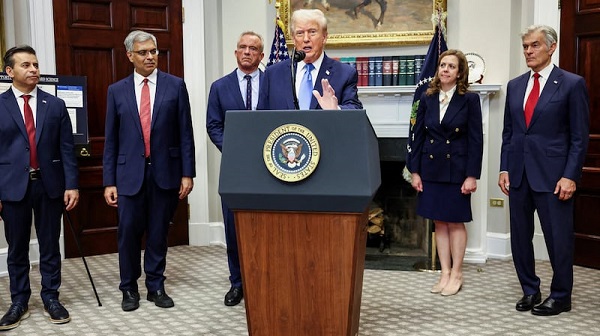conflict
Middle East clash sends oil prices soaring

This article supplied by Troy Media.
 By Rashid Husain Syed
By Rashid Husain Syed
The Israel-Iran conflict just flipped the script on falling oil prices, pushing them up fast, and that spike could hit your wallet at the pump
Oil prices are no longer being driven by supply and demand. The sudden escalation of military conflict between Israel and Iran has shattered market stability, reversing earlier forecasts and injecting dangerous uncertainty into the global energy system.
What just days ago looked like a steady decline in oil prices has turned into a volatile race upward, with threats of extreme price spikes looming.
For Canadians, these shifts are more than numbers on a commodities chart. Oil is a major Canadian export, and price swings affect everything from
provincial revenues, especially in Alberta and Saskatchewan, to what you pay at the pump. A sustained spike in global oil prices could also feed inflation, driving up the cost of living across the country.
Until recently, optimism over easing trade tensions between the U.S. and China had analysts projecting oil could fall below US$50 a barrel this year. Brent crude traded at US$66.82, and West Texas Intermediate (WTI) hovered near US$65, with demand growth sluggish, the slowest since the pandemic.
That outlook changed dramatically when Israeli airstrikes on Iranian targets and Tehran’s counterattack, including hits on Israel’s Haifa refinery, sent shockwaves through global markets. Within hours, Brent crude surged to US$74.23, and WTI climbed to US$72.98, despite later paring back overnight gains of over 13 per cent. The conflict abruptly reversed the market outlook and reintroduced a risk premium amid fears of disruption in the world’s critical oil-producing region.
Amid mounting tensions, attention has turned to the Strait of Hormuz—the narrow waterway between Iran and Oman through which nearly 20 per cent of the world’s oil ows, including supplies that inuence global and
Canadian fuel prices. While Iran has not yet signalled a closure, the possibility
remains, with catastrophic implications for supply and prices if it occurs.
Analysts have adjusted forecasts accordingly. JPMorgan warns oil could hit US$120 to US$130 per barrel in a worst-case scenario involving military conflict and a disruption of shipments through the strait. Goldman Sachs estimates Brent could temporarily spike above US$90 due to a potential loss of 1.75 million barrels per day of Iranian supply over six months, partially offset by increased OPEC+ output. In a note published Friday morning, Goldman Sachs analysts Daan Struyven and his team wrote: “We estimate that Brent jumps to a peak just over US$90 a barrel but declines back to the US$60s in 2026 as Iran supply recovers. Based on our prior analysis, we estimate that oil prices may exceed US$100 a barrel in an extreme tail scenario of an extended disruption.”
Iraq’s foreign minister, Fuad Hussein, has issued a more dire warning: “The Strait of Hormuz might be closed due to the Israel-Iran confrontation, and the world markets could lose millions of barrels of oil per day in supplies. This could result in a price increase of between US$200 and US$300 per barrel.”
During a call with German Foreign Minister Johann Wadephul, Hussein added: “If military operations between Iran and Israel continue, the global market will lose approximately five million barrels per day produced by Iraq and the Gulf states.”
Such a supply shock would worsen inflation, strain economies, and hurt both exporters and importers, including vulnerable countries like Iraq.
Despite some analysts holding to base-case forecasts in the low to mid-US$60s for 2025, that optimism now looks fragile. The oil market is being held hostage by geopolitics, sidelining fundamentals.
What happens next depends on whether the region plunges deeper into conflict or pulls back. But for now, one thing is clear: the calm is over, and oil is once again at the mercy of war.
Toronto-based Rashid Husain Syed is a highly regarded analyst specializing in energy and politics, particularly in the Middle East. In addition to his contributions to local and international newspapers, Rashid frequently lends his expertise as a speaker at global conferences. Organizations such as the Department of Energy in Washington and the International Energy Agency in Paris have sought his insights on global energy matters.
Troy Media empowers Canadian community news outlets by providing independent, insightful analysis and commentary. Our mission is to support local media in helping Canadians stay informed and engaged by delivering reliable content that strengthens community connections and deepens understanding across the country.
Artificial Intelligence
AI Drone ‘Swarms’ Unleashed On Ukraine Battlefields, Marking New Era Of Warfare


From the Daily Caller News Foundation
Artificial intelligence-powered drones are making their first appearances on the battlefield in the Russia-Ukraine war as warfare creeps closer to full automation.
In bombardments on Russian targets in the past year, Ukrainian drones acting in concert were able to independently determine where to strike without human input.
It’s the first battlefield use of AI “swarm” technology in a real-world environment, a senior Ukrainian official and Swarmer, the company who makes the software, told the Wall Street Journal in a Tuesday report. While drones have increasingly defined modern battlefields, swarms until now had been confined to testing rather than combat.
“You set the target and the drones do the rest,” Swarmer Chief Executive Serhii Kupriienko told the WSJ. “They work together, they adapt.”
So far, the Swarmer technology has been used hundreds of times to target Russia assets, but was first used a year ago to lay mines on the front, the Ukrainian official told the WSJ. The software has been tested with up to 25 drones at once, but is usually utilized with only three.
Kupriienko told the WSJ that he was preparing to test up to 100 drones at once with the linking software.
A common arrangement used on the battlefield includes one reconnaissance drone to scout out the target and two explosive drones delivering the payload on target, the official told the WSJ.
While Western nations such as the U.S., France and the United Kingdom are also pursuing drone swarm technology, they have not deployed swarm technology on the battlefield the way Ukraine has, according to the WSJ. Currently, autonomous weapons are not regulated by any international authority or binding agreement, but ethical concerns around the technology has led many to call for increased regulation of weapons like the Swarmer system.
The Ukrainian Ministry of Foreign Affairs did not immediately respond to the Daily Caller News Foundation’s request for comment.
conflict
Trump Pentagon Reportedly Blocking Ukraine From Firing Western Missiles Deep Into Russia


From the Daily Caller News Foundation
The Department of Defense has spent months blocking the Ukrainian military from using American and British-made missiles to hit targets deep inside Russia, The Wall Street Journal reported Sunday, citing unnamed U.S. officials.
Undersecretary of Defense for Policy Eldridge Colby reportedly designed the procedure to review requests to carry out the long-range strikes with weapons that are either of U.S. origin or that require American intelligence or use components provided by the U.S., according to the WSJ. Secretary of Defense Pete Hegseth reportedly has the final say on whether Ukrainian forces can use the MGM-140 ATACMS (Army Tactical Missile System) to hit targets in Russia.
The reported blocks on missile strikes coincides with a Trump administration effort to broker a peace deal between Russia and Ukraine. A Pentagon spokesperson declined to comment further on the matter.
BREAKING: President Vladimir Putin reacts to B-2 Flyover pic.twitter.com/1mzVn7DxlW
— Jack Poso 🇺🇸 (@JackPosobiec) August 15, 2025
The Biden administration allowed Ukraine to carry out strikes with ATACMS in November, weeks after President Donald Trump won the 2024 election, the New York Times reported. Trump criticized the move during a December interview with Time magazine.
“It’s crazy what’s taking place. It’s crazy,” Trump said. “I disagree very vehemently with sending missiles hundreds of miles into Russia. Why are we doing that? We’re just escalating this war and making it worse. That should not have been allowed to be done.”
Trump and Russian President Vladimir Putin met in Alaska on Aug. 15 for a summit meeting during which Trump sought to secure a cease-fire in Russia’s war with Ukraine. As Trump greeted Putin, a B-2A Spirit stealth bomber and several fighters carried out a flyover of Elmendorf Air Force Base.
Trump met with Ukrainian President Volodymyr Zelensky and major European leaders on Aug. 18 to update them on the summit.
In July, Trump reached an agreement with NATO where members of the alliance would purchase weapons, including MIM-104 Patriot surface-to-air missiles, and donate them to Ukraine.
-

 Censorship Industrial Complex2 days ago
Censorship Industrial Complex2 days agoCanada To Revive Online Censorship Targeting “Harmful” Content, “Hate” Speech, and Deepfakes
-

 Alberta2 days ago
Alberta2 days agoAlberta refuses to take part in Canadian government’s gun buyback program
-

 Business1 day ago
Business1 day agoTaxpayers deserve proof of how politicians spend their money
-

 Business1 day ago
Business1 day agoOttawa’s civil service needs a Chrétien-style reset
-

 Alberta2 days ago
Alberta2 days agoOrthodox church burns to the ground in another suspected arson in Alberta
-

 Fraser Institute1 day ago
Fraser Institute1 day agoAboriginal rights now more constitutionally powerful than any Charter right
-

 Alberta1 day ago
Alberta1 day ago$150 a week from the Province to help families with students 12 and under if teachers go on strike next week
-

 International1 day ago
International1 day agoTrump gives Hamas four days to choose: peace or obliteration





